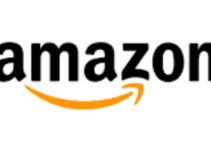Theater outlines the live collective performance of actors and actresses playing real and imaginary characters live before the audience. The performers communicate to the audience through dance, music, song, speech, or portraying gestures. Today, we’ll discuss Porter’s five forces analysis of Theater Industry; bargaining power of suppliers and buyers; threat of new entrants and substitutes; and intense rivalry as competitive forces in strategic management.
Elements and Components of Theater
- Lighting to amplify the experience
- Stagecraft
- Painted scenery
Types of Theaters in the Theater Industry
- Comedy
- Musical theater
- Drama
- Improvisation
- Tragedy
Statistical facts and figure about Theater Industry
- Global Market size – 63 billion USD (2022)
- Growth rate – 4.9%
- Prediction – 100 billion USD (2032)
Companies in the Theater Industry
- FanXchange
- Ambassador Theater Group
- Vendini
- Secret Cinema
- D Box Technologies
- Dadi Cinema
- AMC Theater
- WriterDuet
- PolishYourPassion
- XCINES
- BroadWe
- ArtsWrk
- Regal Cinema
- Marcus Theater
- Cinemark
Porter’s five forces analysis of Theater industry would analyze the bargaining power of suppliers and buyers; the threat of new entrants and substitutes; and intense rivalry as competitive forces in strategic management. Here’s Theater industry Porter’s five forces analysis of drama, film, and cinema business as follows;
Porter’s Five Forces Analysis of Theater Industry
Let’s discuss Porter’s five forces analysis of Theater Industry as a competitive forces in strategic management and they’re as follows;
Bargaining Power of Suppliers in Theater Industry
The bargaining of suppliers is higher in the Theater Industry as competitive forces in strategic management. Some of the main factors impacting the bargaining power of suppliers in the Theater Industry Porter’s five forces analysis of drama, film, and cinema business are as follows;
I-Suppliers Availability
Some of the main suppliers in the theater industry are as follows;
- Studio
- Ticket distributors
- Marketers
- Vendors
- Actors and actresses
- Director
- Writer
- Makeup artists
- Theater building
The suppliers for theater drama or cinema are easily available, but they have busy schedules. Usually, artists, studios, and other suppliers have contracts with other theaters, film, and drama-producing companies. They are working on a very strict schedule, and theaters have to meet their standards and requirements; it gives them significant bargaining power.
II-Quality & Cost
There are low-cost and budget-friendly artists, directors, and studios available; but they won’t give you the required quality that theater is looking for in its drama. Quality artists, studios, and directors have a specific price and they won’t work for cheap.
Bargaining Power of Buyers in Theater Industry
The bargaining of Buyers is Higher in the Theater business as a competitive forces in strategic management. Some of the main factors impacting the bargaining power of suppliers in the drama, film, and cinema business five forces analysis of the Theater industry are as follows;
I-Entertainment Options
The target audience and theatergoers have multiple entertainment options. They could go to the theater, buy the ticket, and enjoy the live performance of actors; or they could sit at home and watch the movie on Netflix. It is highly dependent on the individual mood; for instance, if they’re in the mood of going out and socializing; they would; otherwise, they won’t.
II-Low Switching Cost
The targeted customers could easily switch from one source of entertainment to the other without incurring a lot of cost. Since they have multiple entertainment options, and they all charge more or less the same price. It gives individual customers significant bargaining power.
Threat of New Entrants in Theater Industry
The threat of new entrants is Moderate in drama, film, and cinema business and Theater industry as competitive forces in strategic management. Some of the main factors impacting the threat of new entrants in the drama, film, and cinema business five forces analysis of Theater industry are as follows;
I-High Investment
Starting the theater business requires a significantly higher capital investment in the form of studios, directors, theater building, artists, and other running expenses. Bringing all of these elements together is one, and creating a great drama and theater show is completely different. It is highly dependent on the top-class performance of all the individuals in order to make the show perfect.
II-Regulations
Along with the high capital investment, Theater Company has to comply with the regulatory requirements and standards. It could be in the form of permits and licenses from the local government, zoning laws, censorship board approval, and building codes. Without their approval, theater can’t play shows and entertain the audience.
III-Marketing
The theater has completed all the requirements like invested resources and has the license and approval from the government. Having all of these elements doesn’t guarantee the success of the theater business; they need to invest a significant amount of capital resources on marketing and branding; advertise their show and earn the trust and confidence of the target audience.
Threat of Substitutes to Theater Industry
The threat of substitute products and brands is higher in the Theater industry as competitive forces in strategic management. Some of the main factors impacting the threat of new substitutes in the drama, film, and cinema business five forces analysis of Theater industry are as follows;
I-Alternative Entertainment Option
Netflix, Cinema, TV, social media platforms, and video games all are alternative sources of entertainment. An individual user has multiple options, and they could either watch the TV or buy a ticket for a Cinema or Theater show. Multiple alternative options increase the substitution rate from one entertainment source to the other.
II-Uniqueness
In order to influence the user’s decision, theater companies offer various types of services; great experience inside threat experience, loyalty programs, seating preferences, and ticket discounts. Additional services help theaters earn the trust and confidence of ordinary users.
Competitive Rivalry in Theater Industry
The competitive rivalry among Theater companies is very high in the Theater industry as competitive forces in strategic management. Some of the main factors impacting competitive rivalry in the Theater business five forces analysis of drama, film, and cinema business are as follows;
I-Competition
The theater industry has become highly competitive over the years with multiple sources of entertainment. They all have earned a significant market share. They need to invest in technology and other artistic areas to develop great shows and gain a competitive edge. It allows them to keep themselves relevant to the theater market.
Conclusion: Theater Industry Porter’s Five Forces Analysis |5 Forces Analysis of Theater Industry
After an in-depth study of Porter’s five forces analysis of theater industry; we have realized that theater industry is the world’s leading growing business. If you are learning about the Theater industry five forces analysis of drama, film, and cinema business; then you should keep in mind the abovementioned bargaining power of suppliers and buyers; threat of new entrants and substitutes; and intense rivalry as competitive forces in strategic management.

Ahsan is an accomplished researcher and has a deep insight in worldly life affairs. He goes Live 3 days a week on various social media platforms. Other than research writing, he’s a very interesting person.


